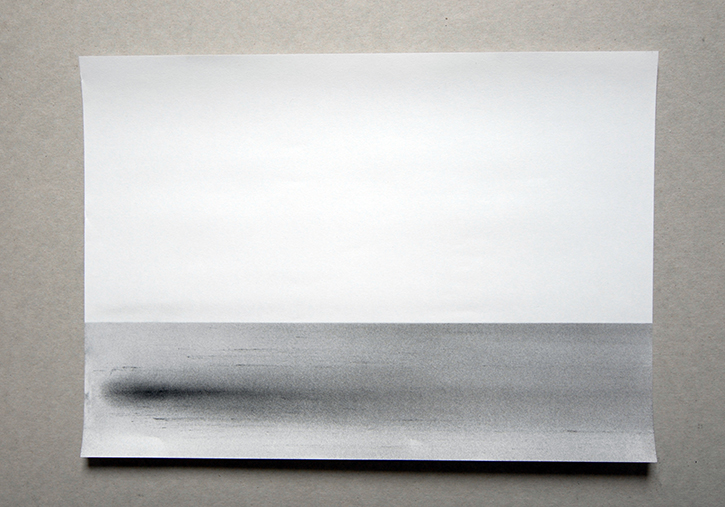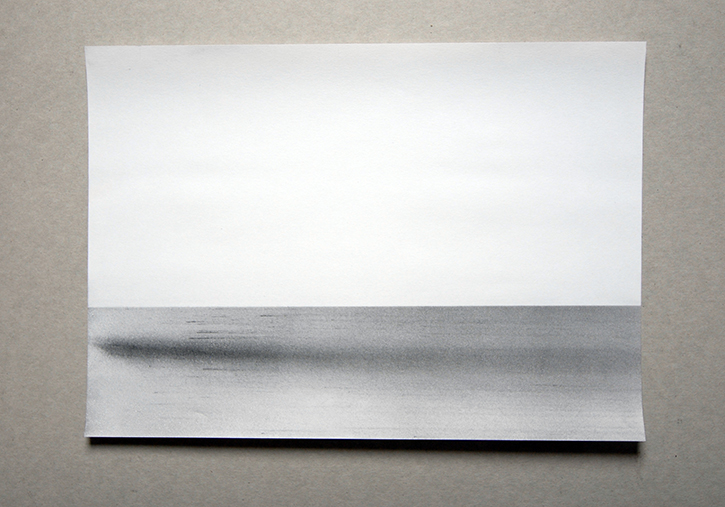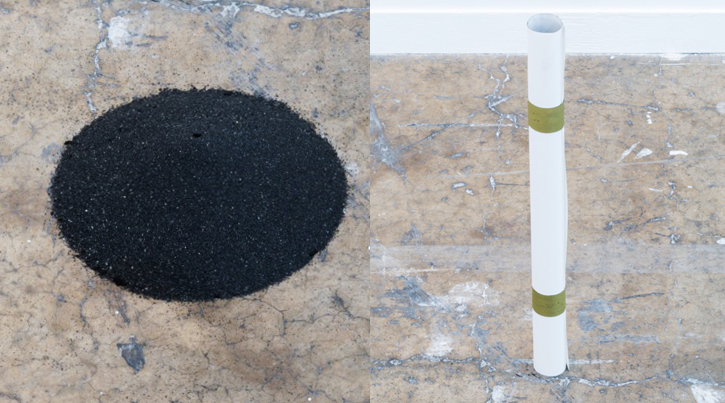 |
SCROLL (TIME IS MORE THAN EVER A LINE), 2013. Lava sand and charcoal on paper, 42 x 30 cm. |
SCROLL (TIME IS MORE THAN EVER A LINE), 2013 Lava sand, night black charcoal, gold pastel on paper. The work consists of 5 scrolls of paper with 2 gold pastel ribbons wrapped around each. Lava sand mixed with night black charcoal is poured into each scroll and emptied beside, leaving a perfect circular cone shape. The scrolls are presented next to the cones of lava sand. Inside the scrolls, the lava sand/charcoal has left a drawing one the paper, once opened revealing a perfect line. The visual circular shape is transformed into a hidden line - a modern view of time. The Dead Sea Scrolls are ancient manuscripts that were discovered between 1947 and 1956 in eleven caves near Khirbet Qumran, on the northwestern shores of the Dead Sea. They are approximately two thousand years old, dating from the third century BCE to the first century CE. Most of the scrolls were written in Hebrew, with a smaller number in Aramaic or Greek. Most of them were written on parchment, with the exception of a few written on papyrus. The vast majority of the scrolls survived as fragments - only a handful were found intact. Nevertheless, scholars have managed to reconstruct from these fragments approximately 850 different manuscripts of various lengths. They have been called the greatest manuscript discovery of modern times. In 2011, Facebook launched a new virtual space called a Timeline. Photos, videos, and posts of any given user would be categorized according to the period of time in which they were uploaded or created. In March 2012, Timeline became available for "Facebook Pages", and by the end of the month, Facebook had forced all Facebook Pages (not Profile pages) to convert to the Timeline layout, against the will of many page admins. In August 2012, Profile pages were forced to change to the Timeline layout. The modern western mind views time as linear with a beginning and end. Whether you ascribe to the theory of evolution or creation, the timeline for planet earth is the same, a beginning and an end... Time is not linear it is circular. A clock is not a timeline but a circle for the simple reason that time does not begin or stop, it continues without beginning or end. In the same fashion days and years are also circular... With a circular view of time our perspective on the beginning and end of the earth and man change. No longer is the beginning the beginning and the end the end, but a continual cycle of beginnings and endings. While this view of time is contrary to our western way of thinking, it is consistent with other view from other cultures. ...Physical evidence of man's achievements have, on a limited basis, been preserved in the archeological record. Textual evidence, which has been handed down from generation to generation, has been preserved through oral and written accounts of man's history. Geological evidence is preserved within the earth providing us with catastrophic events that have restructured the earth on numerous occasions...The history of mankind is the interlacing circles of generations of people who live and die and nations that rise and fall time and time again. The earth circles the sun as the moon circles the earth. Entire solar systems rise and fall through creation and destruction. Text: Concepts in Time By Jeff A. Benner
|
 |
 |
 |
 |
 |
 |
| << back |

